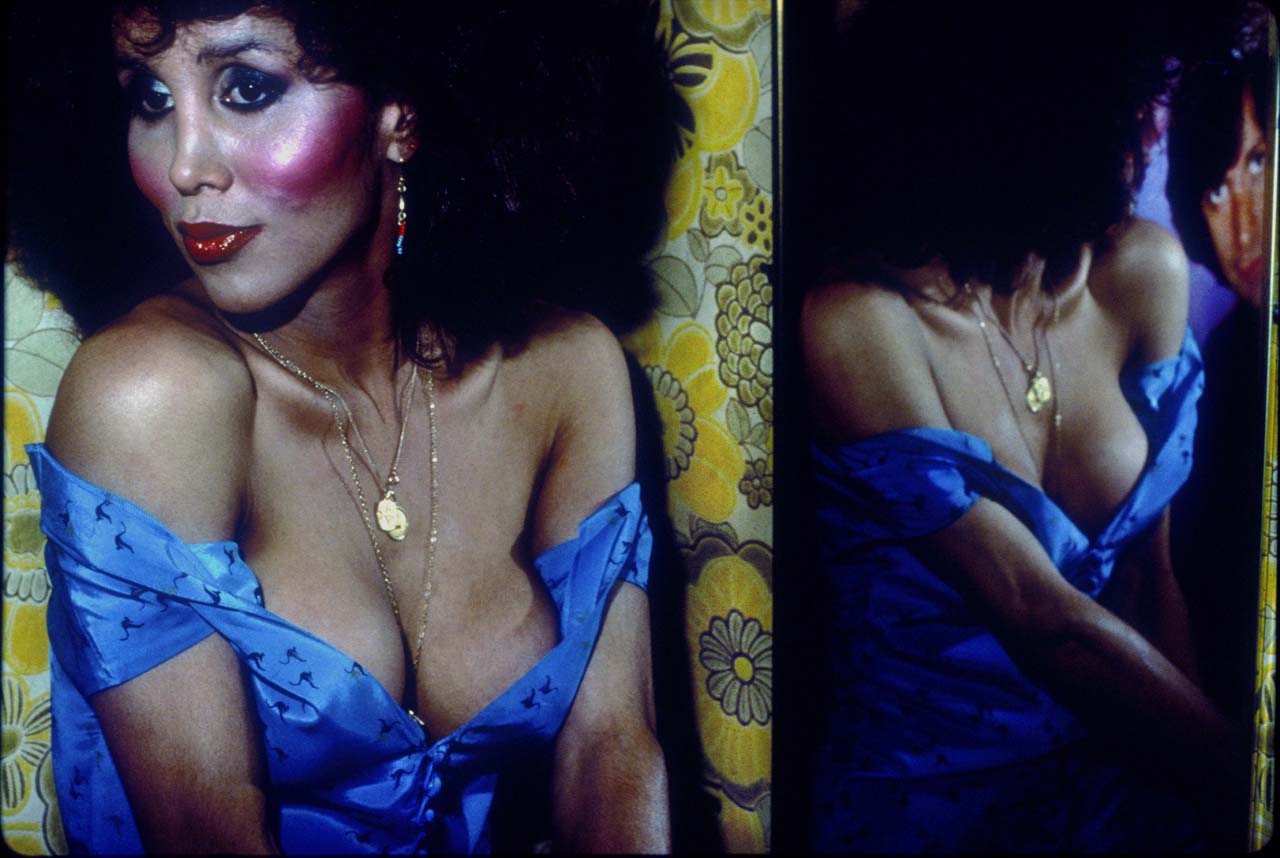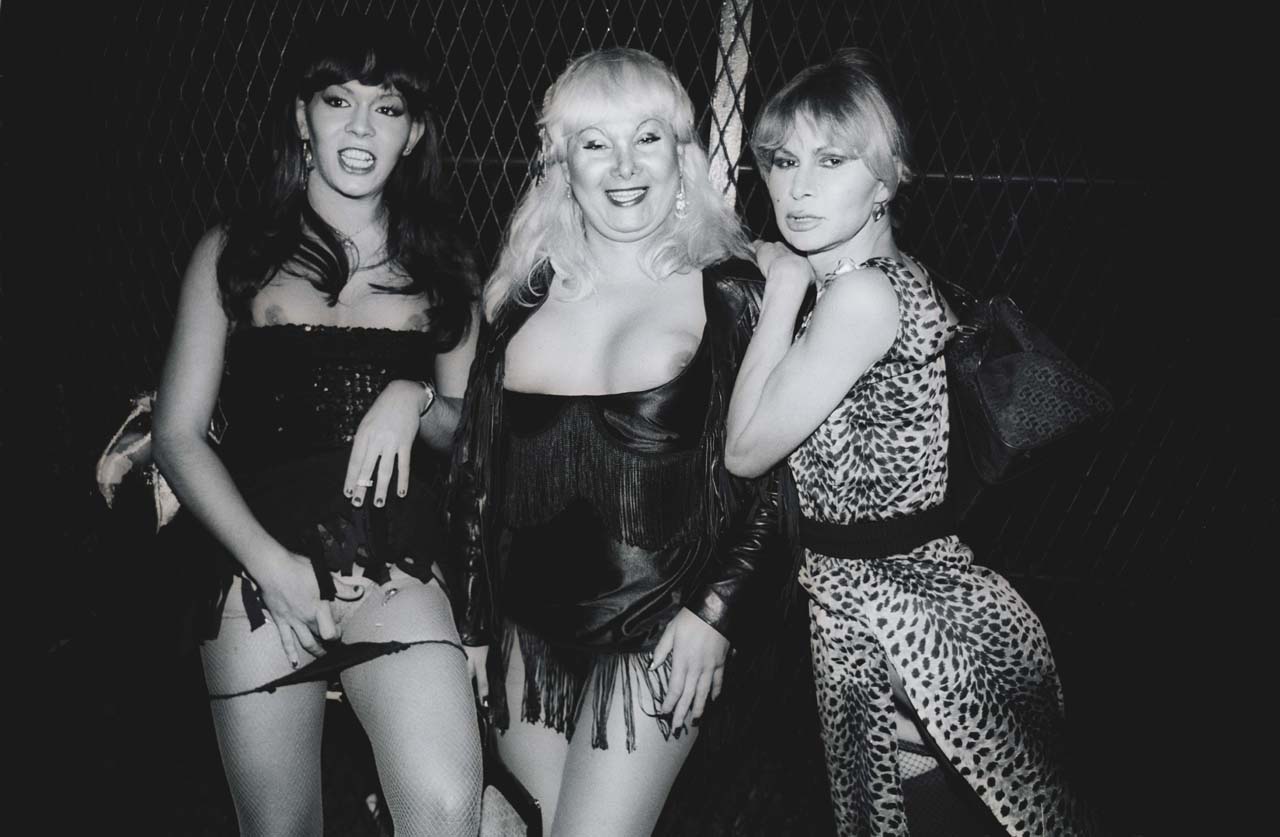A collaboration through time, history, and circumstance: Ultimate Angels is a striking exploration of transgenderism in all its isolation, expression, and glory.
This week, photographer Byron Newman and artist Aphrodite Papadatou unveil their joint exhibition at the Herrick Gallery, Piccadilly, fusing Newman’s glam approach to photography with the bold, raw strokes of Papadatou’s paintbrush. Intimate, seductive, and strikingly rebellious, the show is a window into the dark underbelly of 1980’s Paris, as well as a vibrant celebration of human sexuality, identity, and personal consciousness.
Long before the subject was given credence the public sphere, the battle for transgender life was played out in the shadowy corners of progressive society, its pioneers often relegated to crime, squalor, and derision. Such was the reality for a close-knit community of Brazilian immigrants on the streets of Paris in the early ‘80s – an insular sorority of transgender women forced into prostitution by poverty and exclusion, struggling to earn the money they needed to fund the various stages of their physical transitions.
This was the community happened upon by photographer Byron Newman and his wife, French actress Brigitte Ariel, during their time in the city, and it was this community that formed the basis of Newman’s 1984 book, The Ultimate Angels – a publication boldly, and undoubtedly, ahead of its time.
“The world wasn’t ready for an exhibition then,” Byron says. “But it is now.”

Receptive to the kindness and attention of Newman’s glamorous wife, the naturally defensive Parisian sex workers began to offer him a glimpse into the practical struggles of their underground lives, highlighting the threats of violence and deportation facing them on a near-constant basis. He began to take photographs – thousands of photographs – documenting the encounters, and, much to their enduring delight, turning his glittering subjects into bona-fide Playboy centrefolds.
“Most of them wanted to be photographed as glamour models,” Newman explains. “A lot of the surgery that they had gone through, remembering that this was in 1980, was expensive, badly executed, and exaggerated. And many had exchanged a male stereotype for a female one. Huge breasts and bottoms, garish make up and provocative costumes screamed to the world that they were women.”
Almost forty years later, working from a London studio, painter Aphrodite Papadatou began placing the unfiltered sexual complexion of her subjects at the forefront of her mixed-media artwork, creating equally vibrant scenes of celebration and defiance. Lust for rebellion, as well as an overwhelming fascination for the world outside of what we have come to call mainstream, prompted her to delve more deeply into the physical and psychological elements of the transgender experience.
“My subject matters have always been figures inhabiting the periphery of the mainstream in one way or another. Be it out of choice or out of exclusion, they all nonetheless shared an element of resistance and resilience.”

The daughter of a resistance artist and a political journalist, anarchy flows through Papadatou’s blood, as do thousands of years of Greek cultural influence and heritage. Her subjects are bright, bold, and unrepentant, often inhabiting surrealist abstract spaces laden with ancient Greek motifs and patterns.
“There is more than a sense of celebration in my portrayal of transgenderism”, she says. “In every portrait, I wanted to weave their bold, fantastical world in a surrealist apotheosis.”
While vivacious and often unapologetically jubilant in their make-up and poses, neither Newman nor Papadatou’s subjects can escape the sense of vulnerability and isolation that bleeds through their portrayal. Opening up to an artist, whether it’s a photographer or a painter, inevitably means exposing some of the most intimate dimensions of human existence – something that was not lost on Newman as he tried to negotiate his camera equipment around the cramped squalor of Parisian studios:
“I was well aware that as quickly as we had been welcomed into their lives, just as quickly we could have been asked to leave. This was a transient world of fear and paranoia.”
This very fear and distrust, once filtered through a painstaking artistic process, could be harnessed to reveal more than either party could have hoped to imagine, “They were the ultimate thespians, muses that could become in my canvas everything they wanted through my gaze,” Papadatou recalls. “The process truly freed us both.”
Ultimate Angels will be at exhibited at Herrick Gallery, 93 Piccadilly, Mayfair from 12th–23rd July 2017.
Words: Eva Baranova
Photos: Byron Newman
Artwork: Aphrodite Papadatou

















